This 3-move back and biceps workout strengthens your upper body in just 9 minutes
If you’re looking for a new back and bicep workout to add to your upper-body exercise routine, these three moves are a must-try.
There’s no shortage of muscle-torching exercises that hit your back and biceps — but these three could help you build muscle and strength without spending hours in the gym. If the bro split is your preferred workout method — by that, we mean splitting up chest and triceps, leg day and back and biceps — then this one’s a tick for the latter combo.
Back and bicep combos are common because the pulling motion targets both these major muscle groups. In the same way, pushing activates the chest and triceps, so many people also pair push and pull for a complete upper-body sesh. Grab a pair of the best adjustable dumbbells, and let’s get to work.
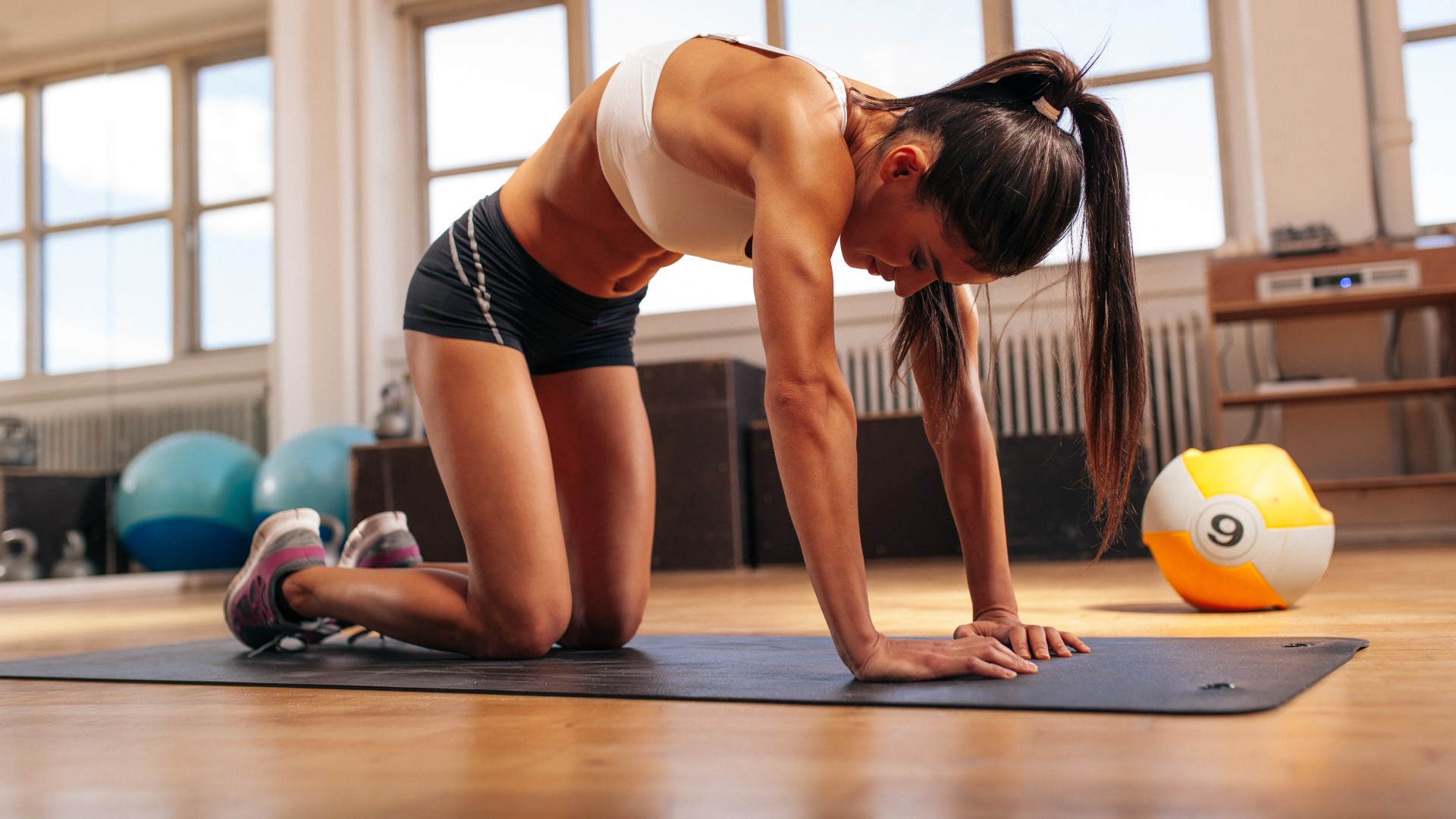
Today’s all about pulling using three compound exercises that work the biceps and various back muscles together rather than one muscle in isolation — you can find out more about isolation vs compound exercises here. You can target more muscles in less time and won’t fatigue your biceps too early to assist you on the heavier lifts to hit your larger, more powerful back muscles.
9-minute, 3-move back and biceps workout
So put those bench presses and push-ups away for the next nine minutes. Perform these three upper-body exercises as an EMOM — every minute on the minute. Aim for 8-12 reps per exercise, and try to finish them at around 45-50 seconds, leaving 10-15 seconds of rest before the next minute starts. Complete three rounds.
If you finish long before then, add more reps or lift a heavier weight that helps you reach fatigue on the last few reps. For a longer workout, just add rounds.
1. Dumbbell Pendlay row
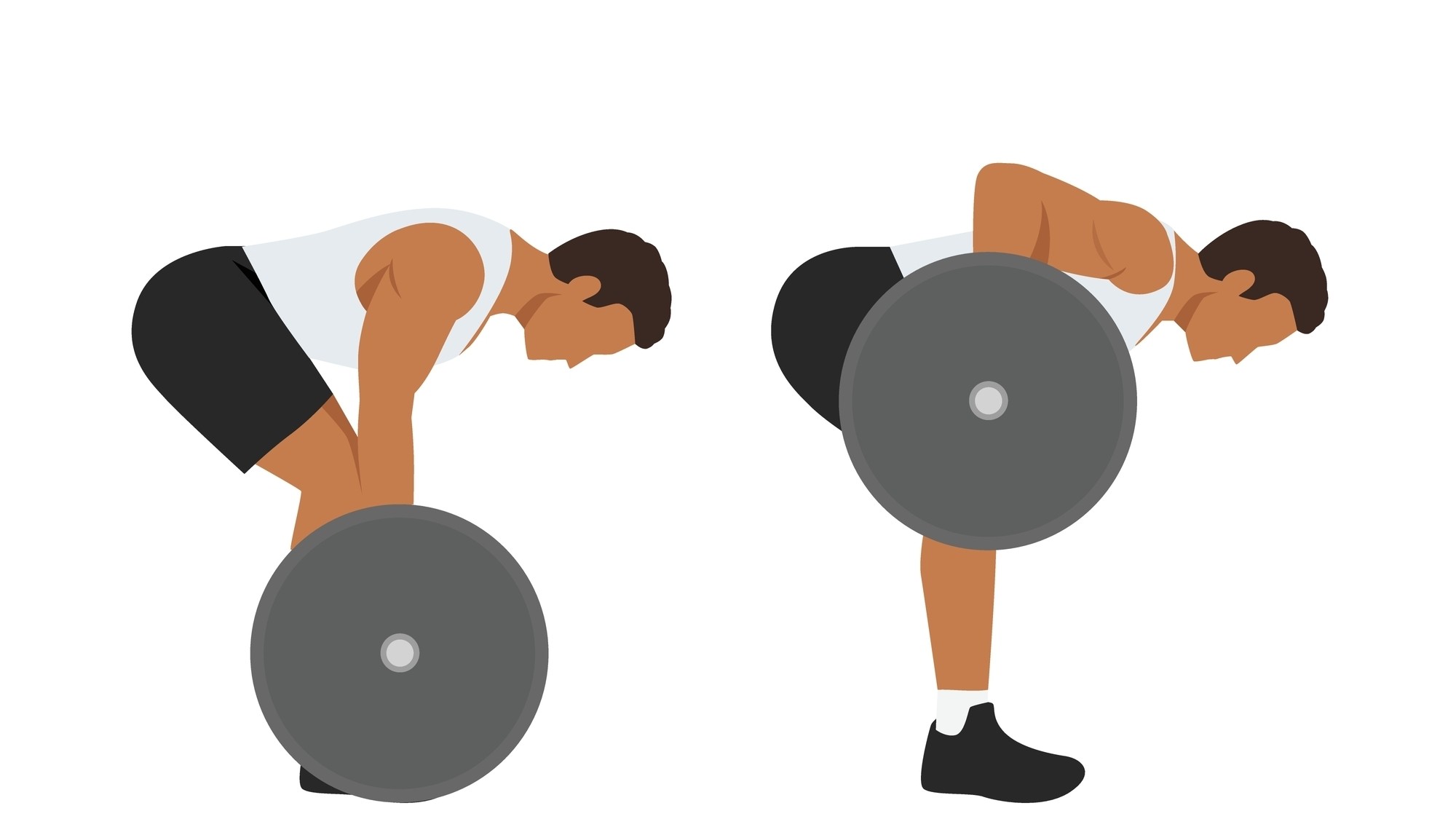
It looks much like a bentover row, but the move requires greater range of motion because, after each rep, you’ll put the barbell or dumbbells down and lift from a dead stop position — from the floor. The horizontal row targets muscles like the latissimus dorsi (lats), trapezius (traps), rear deltoids, biceps and rhomboids, strengthening muscles responsible for good posture and back muscle definition and even engaging your glutes, hips and hamstrings.
Here’s how to do a bentover barbell row. At the bottom of the row, place the barbell down, then row from there. You can also use dumbbells, so just switch out the barbell for free weights, and have a bench or raised platform on standby to place the weights down on. This should help protect from overreaching and hurting the lower back.
2. Dumbbell pull-over
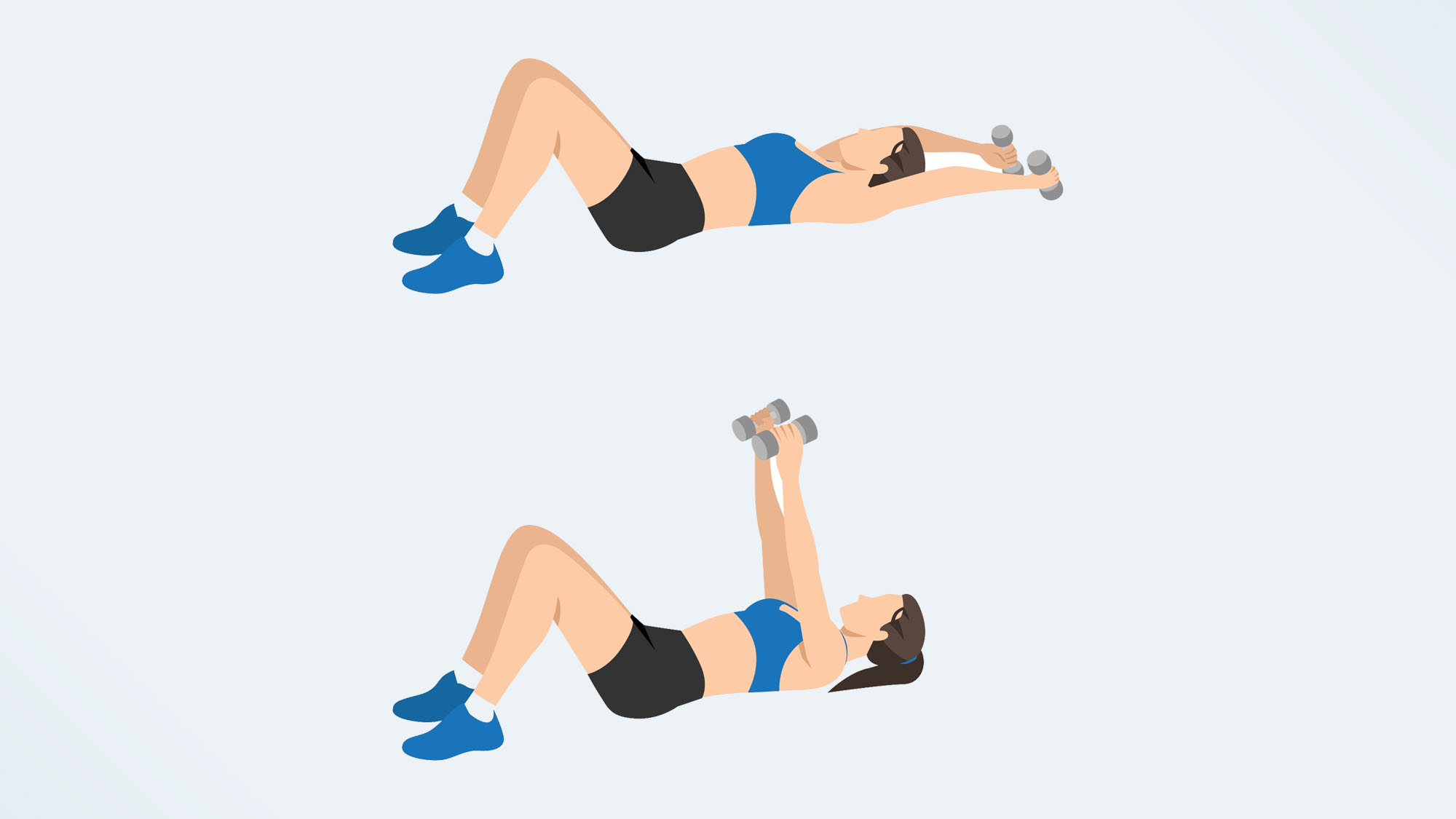
The dumbbell pullover doesn’t require the elbows to bend or flex, meaning you can target the lats (large muscles that run down the sides of your back) and teres major without much use of your arms. The back muscles, pecs and shoulders must do the heavy lifting, which is great for building strength and muscle without assistance from secondary movers like the biceps.
How:
- Lay on your back on an exercise bench, with your feet flat on the floor or bench, ensuring your head is supported
- Hold a dumbbell with both hands or a dumbbell in each hand
- Engage your core and extend your arms to the ceiling, holding the dumbbell over your chest, with your palms facing one another and your elbows slightly bent
- Lower the weight behind you. Pause when both arms extended behind your head, then lift the dumbbell back to your starting position.
3. Dumbbell hammer curls with reverse flyes
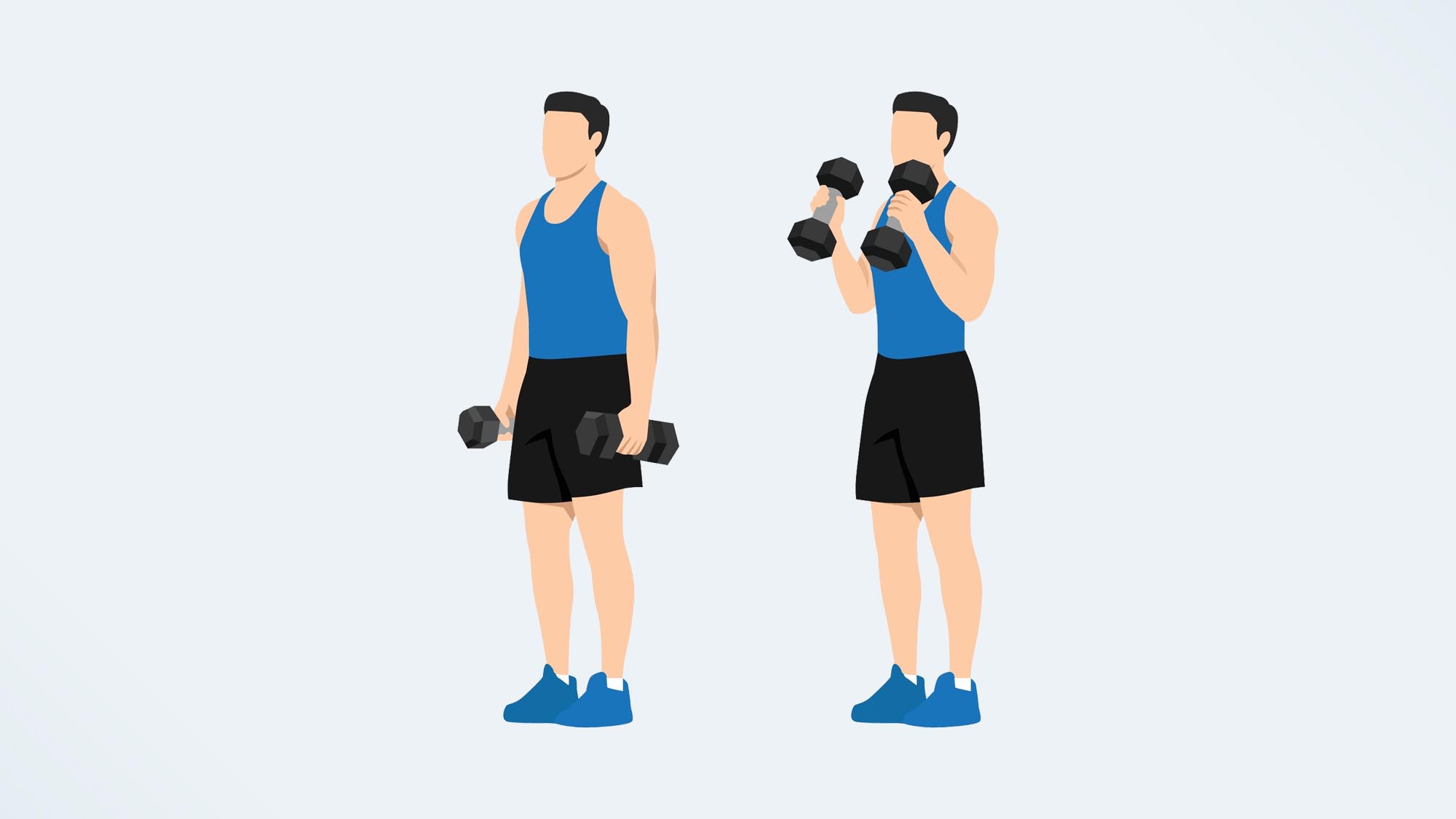
The hammer curl primarily targets and isolates more of the biceps, including the brachialis and brachioradialis, using a neutral grip combined with reverse flyes, which target the traps, rear deltoids (backs of the shoulders) and rotator cuffs without much engagement from your lats. Find out more on hammer curls here.
How:
- Stand with your legs hip-width apart and a soft knee bend
- Hold a dumbbell in each hand with your palms facing toward your body and your thumbs facing forward
- Bend your elbows and lift the lower arms toward your shoulders. Pause, then lower the weights back down to your starting position.
Move with control, and never swing the weights toward you. Engage your core as you move, and avoid arching your back.
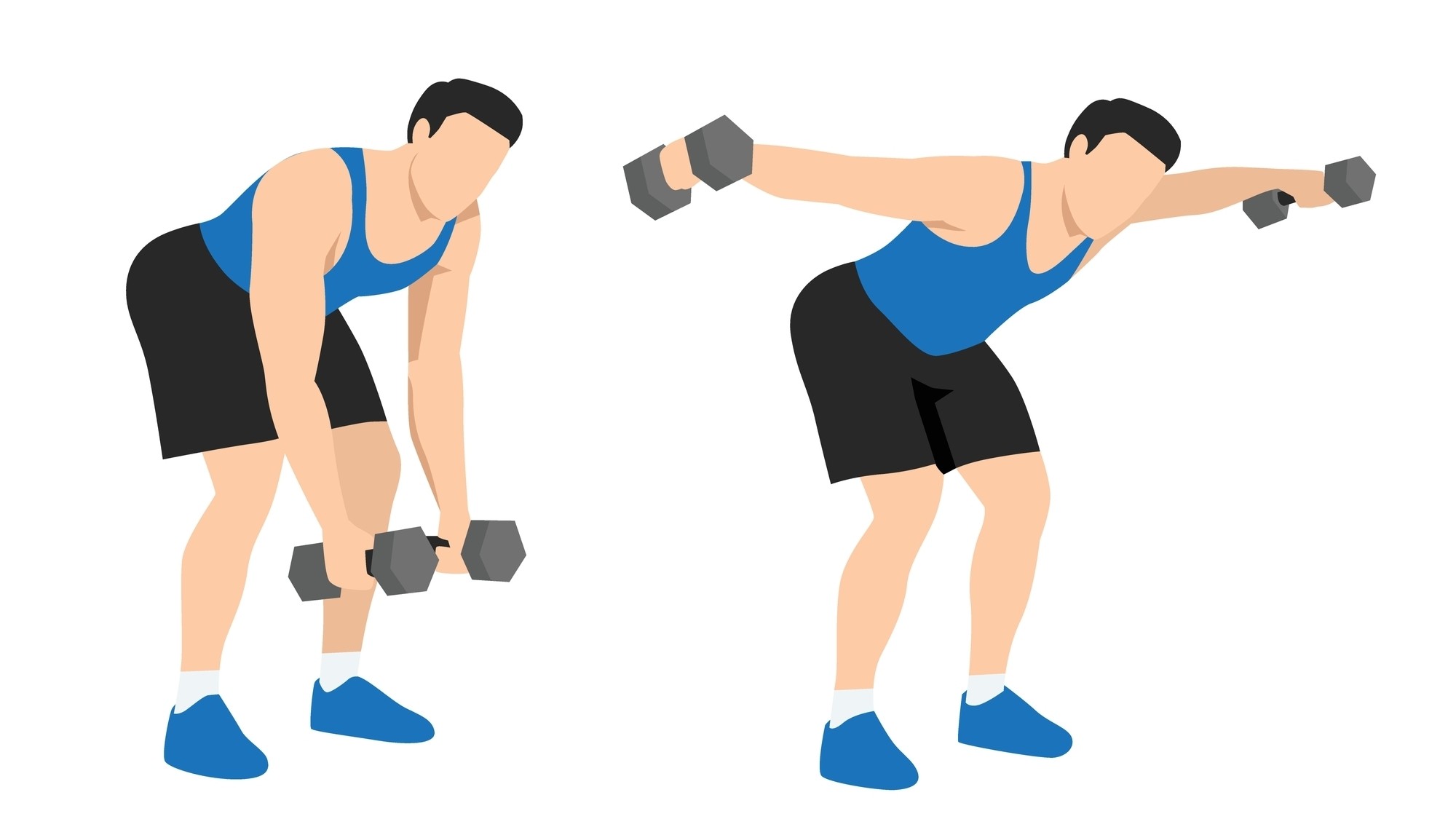
- To perform the flyes, hinge forward at the hips, with a soft knee bend and flat back. Engage your core
- Hold your dumbbells in front of you with palms facing toward each other in a neutral grip
- Keep a soft bend in your elbows. Slowly raise your arms to the sides and squeeze your shoulder blades together. Pause, then lower the dumbbells back to the starting position.
Verdict
Hold fire if you’re wondering why the lack of love for the lower back. The muscles that hug your spine and support posture — the erector spinae muscles — form part of your core network, meaning these muscles engage during many compound movements like deadlifts, Good Mornings and even core workouts. So they still get plenty of attention.
Most back and bicep workouts that follow a traditional resistance training format will include around six exercises, comprising mostly compound movements and then one or two isolation exercises performed toward the end. That’s because the biceps are much smaller muscles and fatigue quicker, so you can train your back more often to a greater intensity.
If your goal is hypertrophy — muscle growth — you might lift at a lighter percentage of your maximum weight ability for slightly more reps or fewer reps at a higher weight for strength training. We cover hypertrophy vs strength training in more detail here.
However, this three-move combo hits every muscle group you need for three sets each and works as more of a circuit, which is an effective and efficient way to train your back and biceps in a shorter time. Either way, get ready to torch your upper-body muscles and hit fatigue from this fiery three-move EMOM.
We list more favorites below if you fancy combining this back and biceps workout with another exercise program.
More from Tom’s Guide
For all the latest Technology News Click Here
For the latest news and updates, follow us on Google News.
